Learning about pH, Acids, Bases, measurements, fun.
Friday, November 11, 2005
Today, after practicing her cursive and some hiragana characters, Q and I opened up our second super-cheap science kit from Michaels Art Supply called "pH Fun!", by The Wild Goose Company.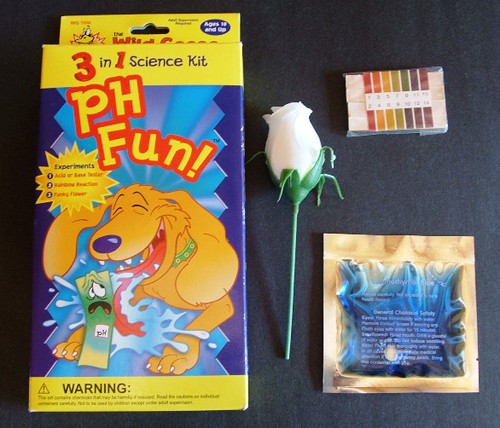
As you can see we have some bromphenol blue (pH indicator), a silk rose with another pH indicator in it's petals, some pH strips and a booklet of experiments.
First, I took Q to a web page to learn some scientific background on acids and bases. This site is good for a graphical representation of the pH scale.
Then we visited this other amazing site that has a flash animation that illustrates a pH meter and we messed around with various solutions and measured their pH. At this point we took a side trip into a discussion of Scientific notation and a 30,000 foot view of molarity so that she could understand what is going on with the pH meter.
Regarding scientific notation, here are a few sites and I found the following blurb here:
Scientific Notation - A positive number is written in scientific notation if it is written in the form: a x 10 [superscript r] where 1 < a < 10 and r is an integer power of 10.
We also found another site that helped us explore pH titrations with an animated buret and solutions.
With the end of these discussions, we went on to the fun stuff!
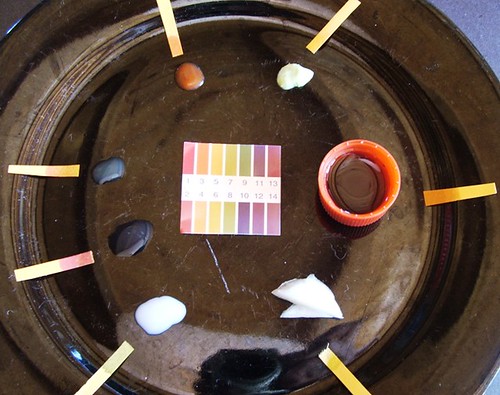
The first task was to test things around the house. We assembled a variety of fluids including (clockwise starting at 1 pm): Wasabi, ponzu sauce (citrus soy sauce), onion slices, milk, lemon juice, orange juce, buffalo wings hot sauce.
You can see the pH strips. The results were as follows: wasabi - 4, ponzu - 3, onion slice juice - 5, milk - 7, lemon juice - 3, orange juice - 4, hot sauce - 3.
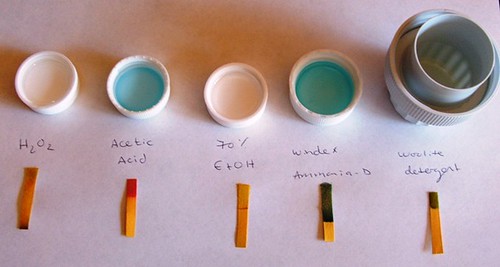
We also tested other materials and got the following results: Hydrogen Peroxide - 5, alcohol - 5, woolite detergent - 8, well water - 6, windex with ammonia-d - 10, acetic acid (vinegar) - 2.
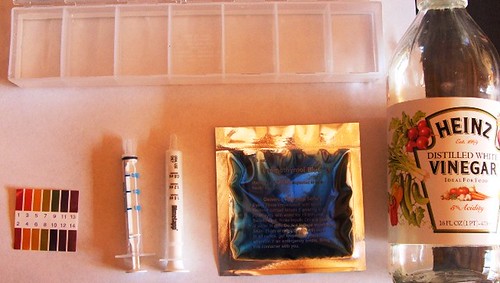
The next experiment was to titrate the pH of a solution of water and bromphenol blue (a pH indicator). Approximately equal amounts of water were aliquoted out, same amounts of bromphenol blue were added to them and then the experiment was to add acetic acid (AA) and see what happens.
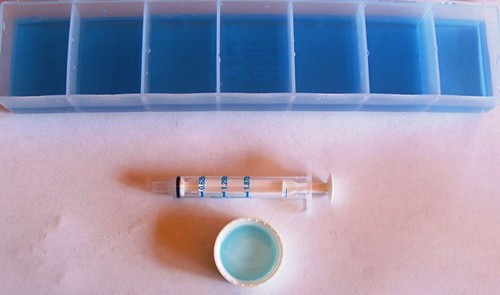
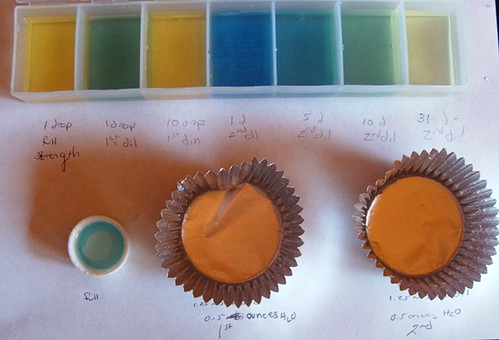
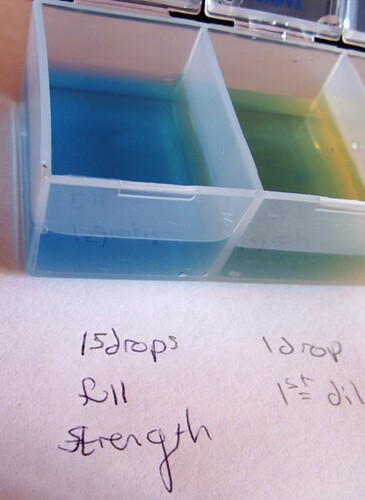
We made a digital movie of this part and it can be found here. (Please let me know how this site works for you re: getting the move to play for you! Lke it? Didnt work? Looks good? Looks horrible?)
Next, we titrated the pH back in the other direction with ammonia! See the digital video here.
We then experimented with the silk flower pH indicator experiment and the video is here.
Here are a few resources/tutorials on pH and chemistry!
Chemistry Hypermedia Project which features comprehensive on-line course in general chemistry.
The Element Song
This is a cute little ditty that is supposed to help students learn the names of the Chemiscal Elements. The lyrics are by Tom Lehrer
with lyrics or audio only file.
WebElements
The periodic table on the WWW. Vastly updated. Mark Winters highly recommends this site. I have been there and for knowledge of the elements, there is no equal. A real five star rating. It has the latest developments on current new elements being synthesized. A must visit!!
LearnChem This site is chock-full of tutorials, practice problems (with solutions), quizzes, exams, and more!
4:54 PM :: 0 comments
Post a Comment
nika :: permalink
>0 Comments:
Post a Comment
<< Home
nika :: permalink

